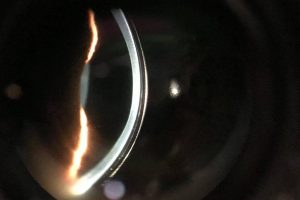Have you been told you are ‘nearsighted’ or ‘farsighted’ but not totally sure what they mean?
Both of these may require you to rely on an optical correction, either eyeglasses or contact lenses, but for very different reasons.
Common vision problems are known as refractive errors. They occur when the eye is unable to focus light properly. There are four kinds of refractive errors – myopia, hyperopia, astigmatism, and presbyopia.
The two most common types of refractive error are myopia (nearsightedness) and hyperopia (farsightedness).
When you are myopic, it’s easy to see close up, but difficult to see far away. For instance, reading a book is clear but reading a road sign isn’t. When you are hyperopic, it’s the opposite, which explains why you might need reading glasses.
Schedule an eye exam with an eye doctor near you to have clear and comfortable vision.
SEE RELATED: Eye Anatomy: The Back of the Eye
What is Myopia?
Myopia, also called nearsightedness, causes people and objects situated at a distance to appear blurry.
Myopia occurs when the cornea is too curved or the eyeball is too long. This causes the focal point of light to fall in front of the retina instead of on the retina.
Most school-aged children, teens, and young adults who need glasses are diagnosed with nearsightedness, which typically begins in childhood and may advance until the late teen years, when the eyes usually stop growing.
People with myopia might need contact lenses, glasses, or corrective surgery to correct their eyesight. Myopia management (also called Ortho-k) is a non-surgical option for gradually and gently reshaping the cornea.
Symptoms of Nearsightedness
Symptoms of nearsightedness may include:
- Headaches caused by eyestrain
- Blurry vision when looking at distant objects
- Excessive blinking
- Persistent squinting or partially closing the eyelids to see clearly
- Difficulty seeing while driving, especially at night
- Needing to sit close to the television or computer, or at the front of the classroom
- Being unaware of distant objects
- Frequent eye rubbing
If you or your child experience any of these symptoms contact an eye doctor near you.
What is Hyperopia?
Hyperopia, also known as farsightedness, causes close-up objects or people to appear out of focus, while distant objects are clear.
Hyperopia occurs when the cornea’s curve is too flat or the eyeball is too short. This causes light to reach a point of focus beyond the retina instead of on the retina.
Farsightedness is often an issue from birth but since a developing brain has the ability to adapt, it can take a while to diagnose. Children who are farsighted may develop a lazy eye or eye turn.
As with myopia, people with hyperopia can benefit from glasses, contact lenses, transitional or bifocal lenses, or corrective surgery. School-age children can be prescribed ‘low plus’ lenses for hyperopia. Some people might need to wear contacts and glasses all the time while others might need them only for reading, computer work, and other close-up tasks.
Symptoms of Farsightedness
Symptoms of farsightedness may include:
- Blurry vision
- Nearby objects may appear blurry
- Squinting to see clearly
- Burning eyes, and aching in or around the eyes
- General eye discomfort
- Trouble focusing on nearby objects
- Headaches or fatigue after doing close work such as reading, writing, or drawing
LEARN MORE: Guide to Eye Health
A comprehensive eye exam tests for nearsightedness and farsightedness. Schedule your eye exam with an eye doctor near you, so that you can start to see clearly.


